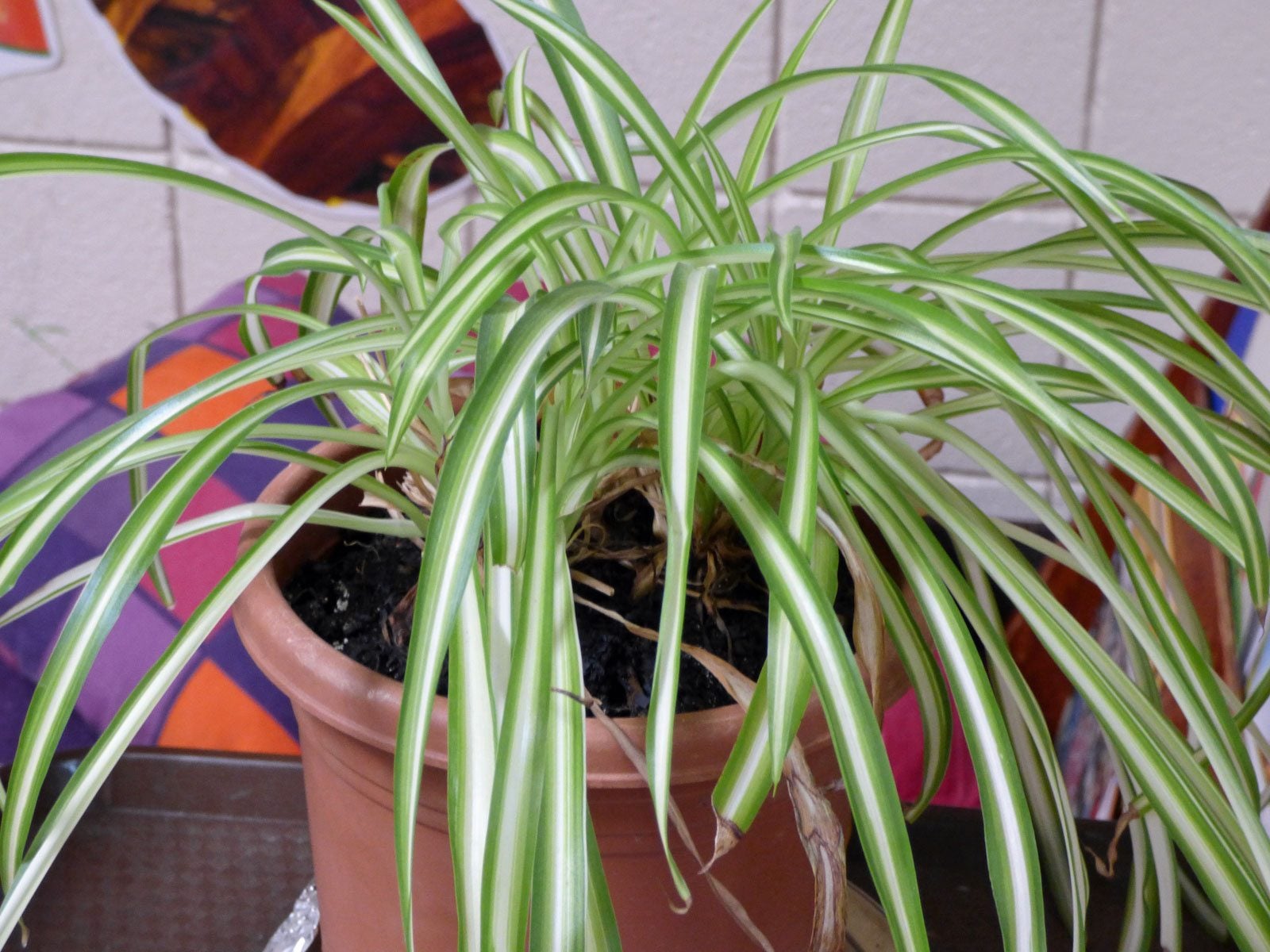Do Spider Plants Need Fertilizer – How To Fertilize Spider Plants

Chlorophytum comosum may be lurking in your house. What is Chlorophytum comosum? Only one of the most popular houseplants. You may recognize its common name as spider plant, AKA airplane plant, St. Bernard’s lily, spider ivy, or ribbon plant. Spider plants are one of the most popular houseplants because they are so resilient and easy to grow, but do spider plants need fertilizer? If so, what type of fertilizer is best for spider plants and how do you fertilize spider plants?
Spider Plant Fertilizer
Spider plants are hardy plants that thrive in less-than-optimal conditions. Plants form tight rosettes of leaves with dangling plantlets hanging from long stems of up to 3 feet (1 m.). While they prefer bright light, they tend to scorch in direct sunlight and are perfect for lower-lit abodes and offices. They do not like temperatures below 50 degrees F. (10 C.) or cold drafts. To care for your spider plant, be sure it is planted in a well-draining, well-aerating potting medium. Water throughout the growing season on a regular basis and mist the plant occasionally, as they enjoy the humidity. If your water is from city sources, it is most likely chlorinated and probably fluoridated as well. Both of these chemicals can result in tip burn. Allow tap water to sit at room temperature for at least 24 hours or use rainwater or distilled water to irrigate spider plants. Spider plants are native to South Africa and are prolific growers and producers of a multitude of plantlets. The plantlets are basically a spider plant baby and can be easily snipped from the parent and rooted in water or damp potting soil to become yet another spider plant. All that aside, do spider plants need fertilizer as well?
How to Fertilize Spider Plants
Fertilizing a spider plant must be done in moderation. Fertilizer for spider plants should be applied sparingly, as overfertilization will result in brown leaf tips just as with chemically laden water. There is no specific spider plant fertilizer. Any all-purpose, complete, water-soluble or granular time-release fertilizer suitable for houseplants is acceptable. There is some discrepancy in the number of times you should feed your spider plant during the growing season. Some sources say once a week, while others say every two to four weeks. The common trend seems to be that overfertilizing will cause more damage than underfeeding. I would go for a happy medium of every two weeks with a liquid fertilizer. If the tips of the spider plant begin to brown, I would back off the amount of fertilizer by half of the manufacturer’s recommended amount. Remember that brown tips may also be caused by chemically laden water, drought stress, drafts, or temperature fluxes. A little experimentation might be in order to get your plant back in tip-top shape, but these plants are known for rebounding and will almost certainly be in the flush of health with a little TLC.
Gardening tips, videos, info and more delivered right to your inbox!
Sign up for the Gardening Know How newsletter today and receive a free copy of our e-book "How to Grow Delicious Tomatoes".

Amy Grant has been gardening for 30 years and writing for 15. A professional chef and caterer, Amy's area of expertise is culinary gardening.
-
 Get Ready For A Summer Of Hummers! Grow These Full Sun Hummingbird Plants and Flowers
Get Ready For A Summer Of Hummers! Grow These Full Sun Hummingbird Plants and FlowersIf you’re lucky enough to enjoy a sunny backyard, make sure you are maxing out on your pollinator opportunities and grow these full sun hummingbird plants and flowers
By Tonya Barnett
-
 12 Lush Alternatives To A Lawn For Sustainable Spaces
12 Lush Alternatives To A Lawn For Sustainable SpacesAlternatives to a lawn are beautiful and also beneficial to your local ecosystem and its pollinators. Explore our top picks for plants to replace grass.
By Tonya Barnett